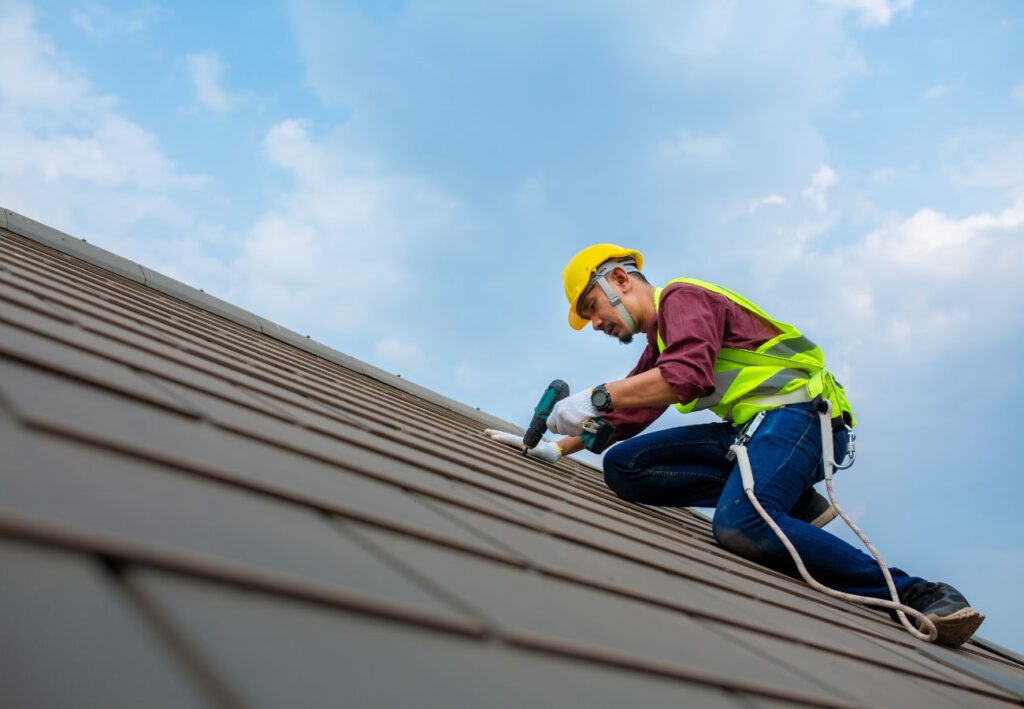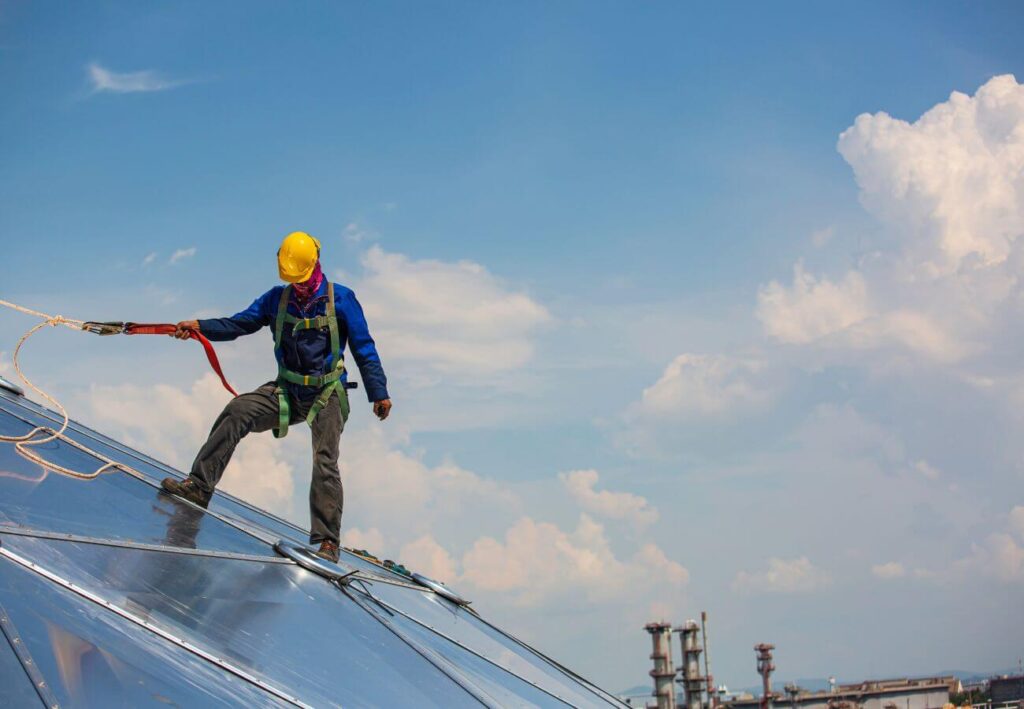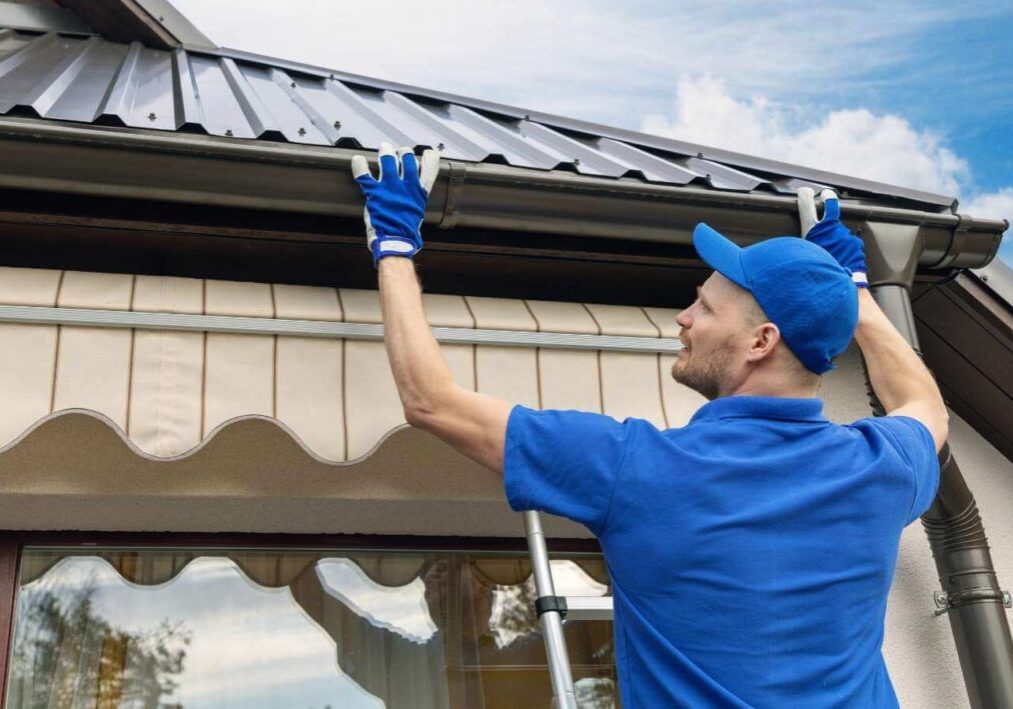OSHA Safety Guidelines: What Roofing Contractors Should Know
Roofing is one of the most demanding construction fields, involving unique risks and challenges that make safety a top priority for both residential and commercial projects. Whether working on a residential roofing Stockton project or a large-scale commercial roofing job, contractors must follow OSHA (Occupational Safety and Health Administration) guidelines to ensure safety standards are upheld. For roofing professionals, knowing these OSHA requirements is essential to protect their teams and maintain compliance with federal laws.
In this comprehensive guide, we’ll explore the key OSHA guidelines for roofing safety, highlight best practices for roofing maintenance Stockton contractors should follow, and explain why choosing a trusted roofing company in Stockton like All Weather Roofing ensures safer, more reliable roofing services.
Why OSHA Compliance Matters in Roofing
Roofing professionals encounter numerous hazards, including falls, heavy machinery, and extreme weather. According to OSHA, falls from heights remain one of the leading causes of injuries and fatalities in the construction industry, with roofing being a high-risk area. OSHA’s roofing safety standards aim to reduce these risks by setting guidelines for safe practices, equipment, and training.
For Stockton’s residential and commercial roofing contractors, OSHA compliance is essential not only for legal reasons but also for establishing a reputation as a responsible and trusted roofing company. Failure to follow OSHA guidelines can result in hefty fines, injury claims, and a loss of trust among clients. Contractors who follow OSHA guidelines protect their teams and assure customers that safety and quality are top priorities.
Key OSHA Guidelines for Roofing Safety
1. Fall Protection
One of OSHA’s primary areas of focus for roofing is fall protection, as falls account for the majority of roofing-related injuries and fatalities. OSHA requires that fall protection measures be implemented when workers are at heights of six feet or more above a lower level. These measures include:
- Guardrails: Guardrails are essential for roof edges and open sides, offering physical barriers to prevent falls.
- Safety Nets: Safety nets are used in situations where installing guardrails is impractical, providing a safe landing area in case of a fall.
- Personal Fall Arrest Systems (PFAS): PFAS includes a harness, anchor, and connectors designed to safely arrest a worker’s fall.
For Stockton roofing inspections and installation projects, these fall protection systems are mandatory to ensure the safety of every team member involved.
2. Ladder Safety
Ladders are a critical tool for roofing professionals but can be hazardous if not used properly. OSHA’s guidelines for ladder safety cover both the selection and use of ladders:
- Selecting the Right Ladder: Ensure that the ladder is appropriate for the height and weight requirements of the project. OSHA recommends using ladders rated for the weight of the worker and any tools they carry.
- Securing the Ladder: Ladders should be secured at the base and top to prevent slipping or tipping. The ladder should also extend at least three feet above the roofline for safe access.
- Proper Angle: OSHA advises using a 4:1 ratio when setting up a ladder—meaning for every four feet of height, the ladder’s base should be one foot away from the wall.
Using proper ladder techniques during roofing maintenance Stockton projects can minimize risks, helping workers perform their tasks safely.
3. Scaffolding Requirements
For commercial roofing Stockton projects, scaffolding is often used to provide safe working surfaces. OSHA’s guidelines require that scaffolding be erected under the supervision of a competent person and adhere to specific design and strength standards. Key requirements include:
- Proper Guardrails and Toeboards: Guardrails and toeboards are mandatory on scaffolding to protect workers from falls and prevent tools from falling onto individuals below.
- Stable Foundation: Scaffolding must be placed on a firm foundation that can support its weight, along with the weight of workers and materials.
- Access Ladders: Scaffolds must include access ladders for safe and easy movement between scaffold levels.
By following OSHA’s scaffolding guidelines, roofing professionals can create safer work environments that minimize fall hazards and improve productivity.

4. Personal Protective Equipment (PPE)
PPE plays a crucial role in safeguarding roofing professionals from various risks, including exposure to sharp tools, chemicals, and falling debris. OSHA mandates specific PPE based on the job tasks and potential hazards:
- Hard Hats: Hard hats protect workers from head injuries due to falling objects.
- Non-Slip Footwear: Roof surfaces can be slippery, particularly in Stockton’s rainy season, making non-slip footwear essential.
- Eye Protection: Safety goggles protect against dust, debris, and harmful UV rays, which are often encountered during roofing work.
- Gloves: Gloves provide protection from sharp edges, heat, and chemicals used in roofing materials.
Choosing the right PPE ensures that roofing professionals can handle residential roofing Stockton projects with greater safety and efficiency.
5. Weather-Related Safety Precautions
Weather can pose a significant risk in roofing projects, particularly when working on elevated surfaces in Stockton’s unpredictable climate. OSHA advises that roofing contractors monitor weather conditions closely and make adjustments to the work schedule as needed:
- High Winds: Avoid working in windy conditions, as wind can destabilize ladders, scaffolding, and materials.
- Rain and Wet Conditions: Wet surfaces can lead to slips and falls. Roofing contractors should suspend work in rainy weather and use slip-resistant materials.
- Heat and Sun Exposure: Excessive heat can lead to heat exhaustion or dehydration. OSHA recommends regular breaks, hydration, and the use of sunscreen to protect workers during hot Stockton summers.
For roofing inspections Stockton professionals conduct year-round, these weather-related safety precautions are essential to maintain safe working conditions.
6. Training and Competent Supervision
OSHA mandates that all roofing professionals undergo safety training that covers fall protection, equipment usage, hazard recognition, and emergency procedures. Each roofing project must have a competent person on-site to oversee safety measures and enforce OSHA guidelines. This person is responsible for identifying hazards, implementing corrective actions, and ensuring that safety standards are upheld.
All Weather Roofing provides trained, qualified professionals for each roofing installation and inspection, ensuring that all OSHA safety standards are met.
7. Emergency Response Planning
Roofing accidents can happen despite safety precautions, making an emergency response plan essential. OSHA requires that roofing contractors establish clear protocols for emergencies, including:
- Emergency Contact Information: Posting emergency contact information at the site.
- First Aid Kits: Ensuring that well-stocked first aid kits are readily available.
- Evacuation Procedures: Implementing evacuation plans and training workers on how to respond in emergencies.
All Weather Roofing prioritizes emergency response readiness, offering clients peace of mind knowing that safety is a core value in each roofing project.
OSHA’s Penalties for Non-Compliance
OSHA takes roofing safety very seriously, and contractors who fail to comply with safety standards may face severe penalties. These can include fines, stop-work orders, and even litigation in the event of a serious injury or fatality. By hiring a trusted roofing company like All Weather Roofing, Stockton property owners can rest assured that their roofing professionals are well-versed in OSHA compliance, delivering safe, high-quality services.

How All Weather Roofing Prioritizes Safety and OSHA Compliance
When it comes to roofing Stockton residents trust, All Weather Roofing sets the standard for quality and safety. Our team is committed to following OSHA guidelines for roofing safety, ensuring each project is completed with the highest level of care. Whether it’s a residential roofing project in Stockton or a large commercial roofing installation, we approach each job with an uncompromising dedication to safety.
Why Choose All Weather Roofing?
- Experienced Roofing Professionals: Our team consists of seasoned experts trained to follow OSHA safety standards and industry best practices.
- Comprehensive Roofing Services: We offer residential and commercial roofing, roof inspections, and roofing maintenance Stockton property owners rely on.
- Commitment to Safety: Safety is at the core of our services, and we continuously monitor and improve our safety practices.
- Local Expertise: As a trusted roofing company in Stockton, we understand the unique challenges posed by Stockton’s weather and terrain.
Conclusion
Understanding OSHA guidelines is essential for any roofing contractor who wants to ensure the safety of their team and the quality of their work. For residential and commercial roofing projects in Stockton, these guidelines help maintain safe practices on-site, protect workers, and provide clients with peace of mind. By working with a trusted roofing company like All Weather Roofing, you can be confident that your project will be handled by roofing professionals who prioritize both safety and quality.
If you’re looking for reliable roof inspection services, quality roofing installation, or skilled roofing professionals, contact All Weather Roofing today. Let us provide you with safe, efficient roofing solutions that adhere to OSHA standards, giving you the confidence and assurance you need for your next roofing project.
Share this post:



